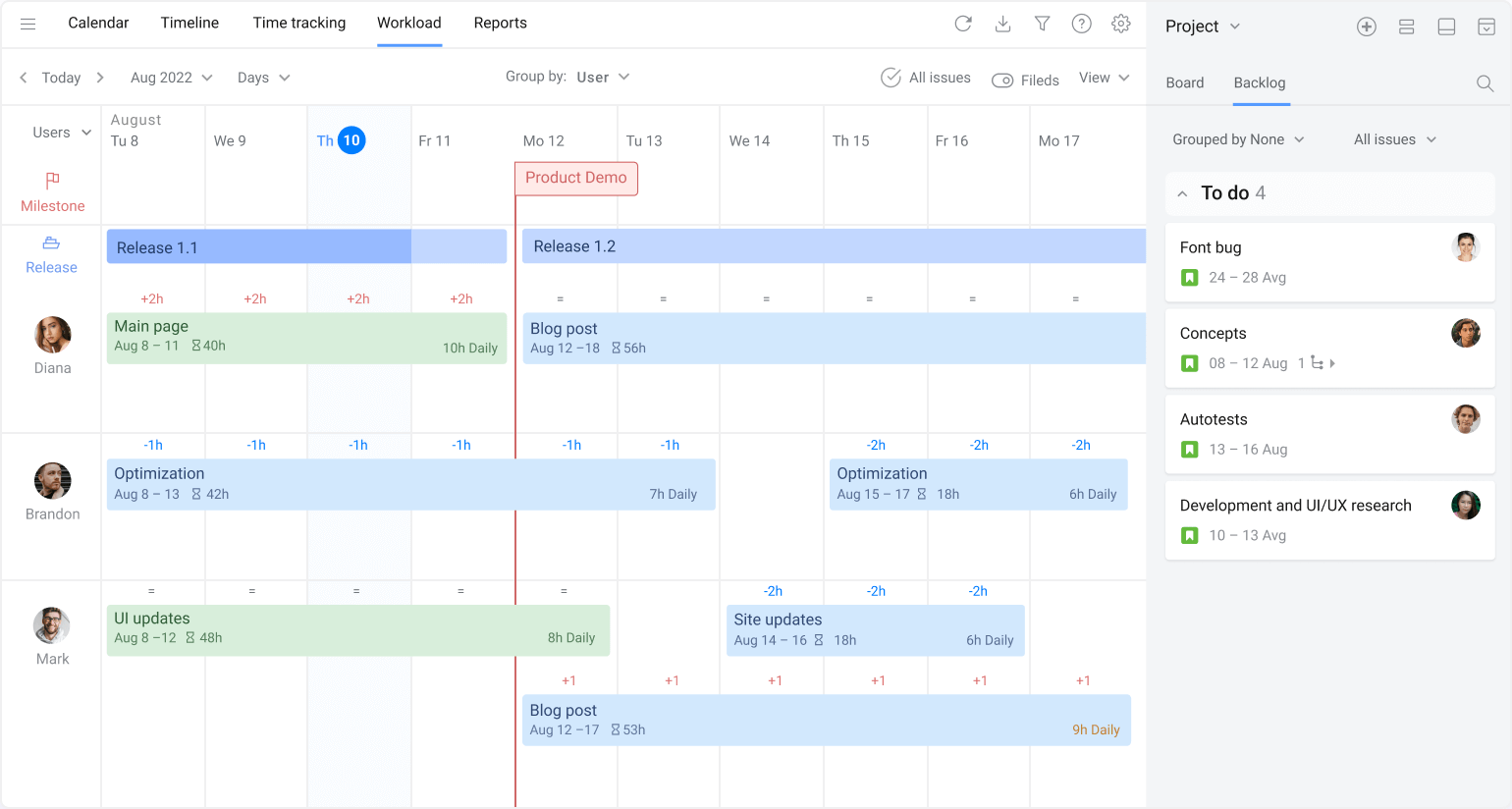Community resources
Community resources
Community resources
Is there a way to set the baseline figure or value like working hours against each resource?
I want to calculate the capacity or bandwidth and overburden value against each resource and throughout on a team level as well.
Kindly suggest a solution for this by not investing in any app or plugin in Jira. I want to calculate it through the available data.
2 answers
It's Mary from Planyway
Calculating team and individual capacity or bandwidth, as well as overburden values, in Jira without investing in additional apps or plugins requires a more manual approach but can be achieved through careful planning and the use of Jira's existing features such as filters, dashboards, and custom fields. Here’s a step-by-step approach to set this up using Jira's existing capabilities:
1. Define Capacity and Overburden Metrics
First, decide how you will measure capacity and overburden. A common approach is to use hours or story points for capacity, and a percentage or a ratio for overburden. Capacity could be the total hours or points a person or team can handle in a given time frame (e.g., a sprint), while overburden could be represented as the percentage of capacity that is being utilized.
2. Set Up Custom Fields (Optional)
If you decide to track capacity or other relevant metrics directly within Jira, you might need to create custom fields. For instance, you could create a custom field for "Capacity" and "Utilization %" for each resource.
3. Use Time Tracking or Story Points
Jira allows issues to be estimated in hours (time tracking) or story points. Ensure your team consistently uses one of these methods to estimate work. This will be crucial for calculating capacity and overburden.
4. Utilize Filters to Group Issues
Create filters to group issues by resource (assignee) and by team (using components, labels, or a custom field if you have teams defined that way). These filters will help you aggregate work assigned to individuals and teams.
5. Calculate Capacity and Overburden
For each individual or team:
- Capacity: Sum the total hours or story points they can handle in the defined time frame. This might need to be tracked outside Jira (e.g., in a spreadsheet) unless you have a custom field for it.
- Current Workload: Use the filters to calculate the total estimated hours or story points assigned to them for the time frame.
- Overburden: Calculate the percentage of capacity used by the current workload. For instance, if an individual has a capacity of 40 hours in a week and is assigned tasks totaling 45 hours, their overburden value is 112.5%.
6. Monitor and Adjust Using Dashboards
Create dashboards in Jira that use gadgets to display the results of your filters, showing workload by individual or team. You can use the "Filter Results" gadget to show issues per assignee/team and the "Workload Pie Chart" or "Two-Dimensional Filter Statistics" to visualize distributions.
7. Review and Adjust Regularly
Capacity planning is an ongoing process. Regularly review the actual work done against the estimates to refine your capacity planning process. This might include adjusting estimates, reevaluating individual or team capacities, or changing how work is allocated.
Limitations and Considerations
Without plugins, this process requires manual updates and calculations, especially for tracking capacity and dynamically adjusting overburden values. Consider using external tools like spreadsheets in conjunction with Jira to manage these calculations more efficiently.
In case you decide to investigate third-party apps, I do recommend you to have a look at Planyway for Jira workload functionality.
There is not an OOTB solution for this. You would need to consider an add-on application, but it sounds like that isn't an option for you?
with that said, typically how this is done, at least in a scrum world is to have each individual commit to X number of story points for each sprint. Obviously, this leaves it to the individual to specify their availability, but in my opinion, that is the correct path.
You must be a registered user to add a comment. If you've already registered, sign in. Otherwise, register and sign in.

You must be a registered user to add a comment. If you've already registered, sign in. Otherwise, register and sign in.